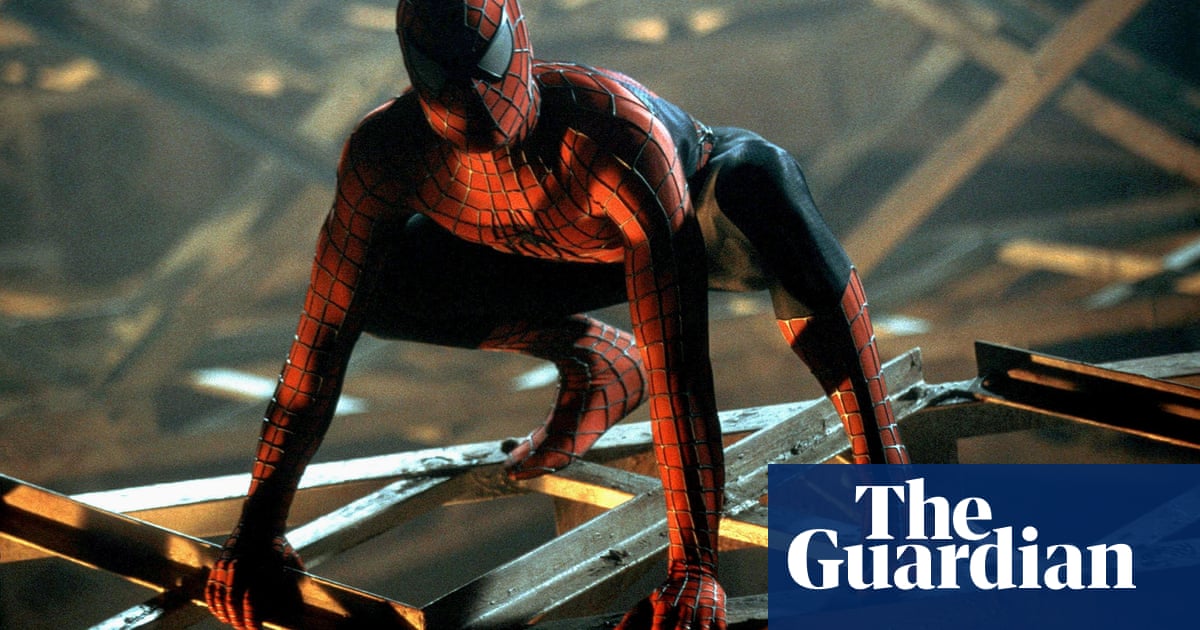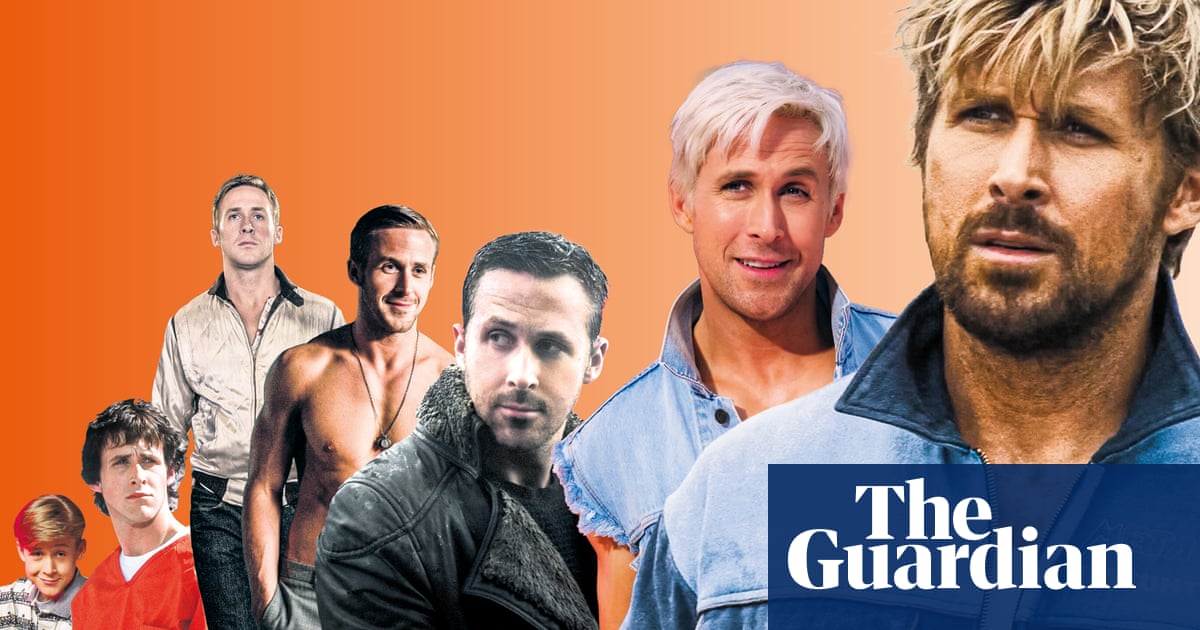
It seems positively absurd to say this now, but in the summer of 2002, Spider-Man reached cinema audiences as a relative novelty. The superhero genre was not dormant, though neither was it all-consuming. The goth-kitsch Batman cycle of the 1990s had petered out at that point, but successful adaptations of Blade and X-Men had resurrected Marvel Comics as viable cinematic fodder after direct-to-video stabs at Captain America and The Punisher.
Blade, however, was an R-rated gorefest aiming for cultish endurance; X-Men, while a notch more accessible to younger viewers, was still a dark-ish, dour-ish affair intended first to please comic book loyalists. Swinging on to screens 20 years ago today, Spider-Man was different: a bright, goofy, youthful adventure with a wholesomeness that the genre hadn’t seen since the Christopher Reeve-starring Superman films two decades before.
Geeky devotees of the then 40-year-old comic-book boy hero would be happy enough with director Sam Raimi’s bouncy screen origin story, but they weren’t necessarily its primary audience. Using the framework of an earlier script by an uncredited James Cameron, David Koepp’s screenplay positioned the young Peter Parker’s tale as a romantic adolescent coming-of-ager first, and a spandex-wars fantasy second – in doing so, it sought the attention of viewers who might, at face value, deem a film about a red-suited lad spinning webs and fighting crime across New York a bit childish for them.
It worked, to the tune of over $825m worldwide. As Spider-Man stayed and stayed and stayed in cinemas that season, it netted families and the date-night crowd in addition to the nerds. “It might just restore the good name of movie escapism,” cheered Rolling Stone’s Peter Travers, amid a surfeit of unexpectedly strong reviews for Raimi’s film. Notably inclined towards hyperbole, Travers may for once have been guilty of understatement: even in the immediate glow of the film’s popularity, few could have anticipated just how drastically Spider-Man would reset the model of populist cinema. Two reboots, seven further Spidey films and a whole entangled cinematic universe later, the film’s chipper underdog demeanour now seems a kind of scrappy Trojan horse through which Marvel wheeled in hegemonic plans for multiplex domination.
As a second-year university student with a fairly snotty attitude to all comic-book culture, I was among the many surprisingly charmed by Raimi’s vision: the film felt honestly dorky and good-natured in a way many of that summer’s assembly-line blockbusters (including wholly businesslike new issues of the Star Wars, Men in Black, Jack Ryan and Mummy franchises) did not. However manufactured its up-with-the-little-guy sentiment, it was hard not to like a film that offered Tobey Maguire – then the twiggy, faintly haunted-looking oddball of such films as The Ice Storm, Pleasantville and The Cider House Rules – a chance to play action hero, that part-unmasked him not for a pivotal plot reveal but a swooning kiss in the rain, and that briefly interrupted a key sequence of digitised urban carnage to let gangly, huge-haired R&B eccentric Macy Gray belt out a few bars of a track titled My Nutmeg Phantasy.
If Spider-Man thus works pretty well as an insider film for outsiders, that’s largely down to the shaggy B-movie sensibility of Raimi. A prodigy who had made his name on the grisly, mordantly funny Evil Dead films, attempted his own stylish superhero original (to little commercial interest) in Darkman, and spent the 90s skipping between genres in such adult-targeted films as The Quick and the Dead and A Simple Plan, he wasn’t an obvious captain for a four-quadrant studio colossus with a six-figure budget. Everyone from chic stylist David Fincher to Batman saviour Tim Burton to family-film merchant Chris Columbus (who passed to launch the Harry Potter franchise instead) was considered before the Columbia Pictures chair, Amy Pascal, took a gamble on Raimi’s sincere comic-nerd enthusiasm – a virtue reflected in the film’s genial sympathy for misfits, as well as a brash, high-key aesthetic that aims to evoke the stylised panels of the original comics at every turn.
It was Raimi, too, who lobbied for the unexpected casting of Maguire as Peter Parker, over the studio’s preference for more buffly handsome teen-idol types – Jude Law and James Franco (eventually cast as Parker’s snivelling frenemy Harry Osborn instead) among them. It was a coup that saved not just the film, but perhaps Marvel’s whole long-term agenda. Revisiting the film today, it’s Maguire’s sweet, strange boy-man quality – and his gentle chemistry with Kirsten Dunst, similarly cast against studio expectations as his sprightly-sad Mary Jane – that carries proceedings through some pretty rough patches in Koepp’s script, most problematically among them a villain who simply hasn’t got the goods. Even in 2002, despite the most lascivious efforts of Willem Dafoe, the Green Goblin seemed stiffly visualised and awkwardly motivated; it was the rare superhero film where the pyrotechnic action kept coming as a distraction from a more compelling relationship story.
Raimi and his team ironed out those issues in 2004’s Spider-Man 2, an altogether sleeker, sharper affair that continued the first film’s endearing character work while subbing in a richer, funnier villain in Alfred Molina’s Doctor Octopus, and shooting for more ambitious visual majesty – with smoother, less chintzy effects work to boot. It remains the high-water mark of the extended Spider-Man universe: Raimi’s ill-advised second sequel didn’t measure up, and neither did either of the subsequent reboot phases, with Andrew Garfield and Tom Holland both broadly appealing but carrying little of Maguire’s poignant gawkiness.
Twenty years on, the character of Spider-Man has become a key property in something far less intimate and ingratiating than Raimi’s comparatively modest 2002 blockbuster. Since Holland’s turn in the role was enfolded into Marvel’s tangled network of Avengers offshoots, any new individual Spider-Man films hardly have time for the pleasantly banal everyday concerns of the early-millennial Peter Parker. There’s not just a city to be saved – a priority that seemed more urgent in a film arriving months after the 9/11 attacks, as Raimi’s film cannily espoused all-for-one-and-one-for-all New Yorker sentiments – but an entire multiverse to be maintained.
By the time Maguire’s Spider-Man returned in last year’s knotty Spider-Man: No Way Home, the quaintness of his take on the character (down to his organic, wrist-based web-spinning abilities, always a more exciting body-horror development than a fancily enabled suit) was quip fodder for subsequent generations. Everything changed, even as everything stays somewhat the same: even Raimi has been brought back into the Marvel fold, directing the latest outing for Spidey’s MCU colleague Doctor Strange, in cinemas this week. Back in 2002, the pressure was on the film-maker to reanimate a sleeping comic-book world; 20 years later, he just has to keep the machine running.












